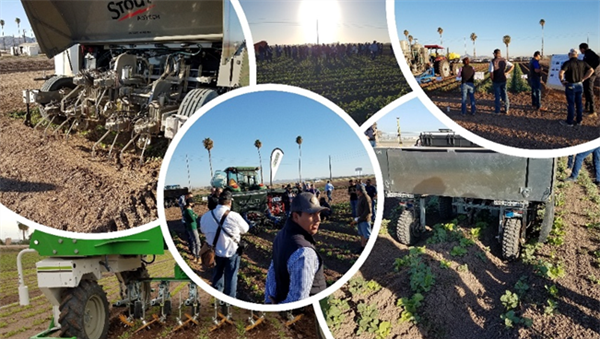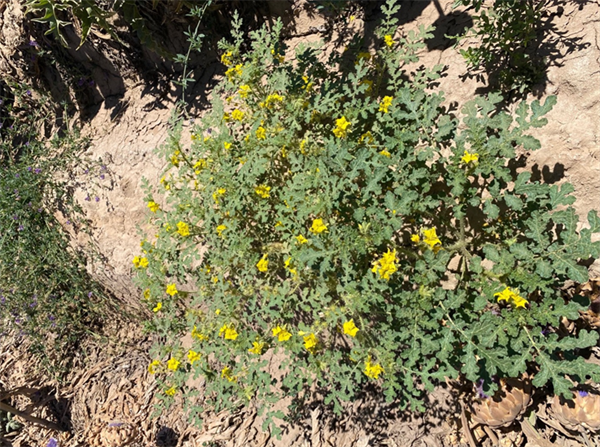
Some major events and developments have taken place recently in the Colorado river water shortage arena. As a result, we are entering into a series of substantial and complicated legal aspects associated with the Colorado River situation.
As part of the SW Ag Summit that is taking place in Yuma this week, we are conducting a breakout session on Thursday, 23 February 2023 titled “Colorado River Water Shortage: Agricultural Perspectives”.
This session will provide a brief review of the background and current situation on the Colorado River and very importantly it will include perspectives from members of the lower Colorado River agricultural community including the Palo Verde Valley, the Imperial Valley, and the Yuma area irrigation districts.
The program outline is as follows:
2023 Southwest Ag Summit
Educational Program
Thursday – February 23, 2023
Morning Breakout Session
9:30 am – 11:30 am
It’s unfortunately a very great season to be a plant pathologist…
We have confirmed the first sample of Fusarium wilt on lettuce submitted to the Yuma Plant Health Clinic from Yuma County. The stunted seedlings looked like any other typical case of damping-off at the seedling stage. When plated on culture media, subsequently confirmed Fusarium colonies grew abundantly from the declining plant tissues. If you’re not already on guard and scouting, this is a warning that Fusarium is active in Yuma County.
Adding on to this early alert, we’ve received a surge of submissions of young brassicas to the clinic. Several severely wilted and declining plants from around Yuma County have cultured positive for Pythium, likely as an opportunistic invader coming in on the back of all the early-season rain that brought stress to seeds and young transplants. Growers may want to consider oomycides, but only if the seedling disease is first confirmed to be Pythium. Remember, many seedling diseases caused by true fungi are indistinguishable from those caused by Pythium.
If you have any concerns regarding the health of your plants/crops please consider submitting samples to the Yuma Plant Health Clinic for diagnostic service or booking a field visit with me:
Chris Detranaltes
Cooperative Extension – Yuma County
Email: cdetranaltes@arizona.edu
Cell: 602-689-7328
6425 W 8th St Yuma, Arizona 85364 – Room 109
Interested in the latest ag technologies? There are a couple of events coming up next month that are worth reminding everyone about. The first is FIRA USA which is a 3-day event being held October 18-20th in Fresno, CA. The focus is on autonomous farming and agricultural robotics solutions. The event includes top-level keynote speakers, breakout sessions, a trade show and in-field demos of automated/robotic harvesting, weeding and planting equipment. The emphasis is on specialty crops, many related to vegetable crop production so it looks to be an informative program. For more information, click here or on the image below.
If you are unable to attend FIRA USA, another option is the University of Arizona’s 3rd AgTech Field Day. The event will be held Tuesday, October 25th at the University of Arizona’s Yuma Agricultural Center. The program will feature many of the technologies presented at FIRA being demoed in the field.
As mentioned in the previous issue, we’d like to showcase as many innovative ag technologies as possible at our UA Field Day. There is still room on the program, so please contact me if you are interested in demoing your equipment or know someone that is. It’s an open invitation - private companies, and university and government researchers are all welcome!

Fig. 1. FIRA-USA conference held October 17-20th in Fresno, CA.
(Photo credits: FIRA-USA).

Fig. 2. The University of Arizona’s 3rd AgTech Field Day will be held Oct. 25th,
2022, at the Yuma Agricultural Center, Yuma, AZ. (Photo from UA’s 2nd AgTech
Field Day held in 2021).
One of our local PCAs (Pest Control Advisors) in Yuma, Arizona found Buffalobur nightshade last week in an artichoke field in the area.
Buffalobur is a summer annual that belongs to the Solanaceae family. Another weed from this family commonly seen is Silverleaf nightshade (Solanum eleagnifolium). Unlike Silverleaf that has a purple flower, Buffalobur has a yellow flower. Leaves are deeply lobed from half to all the way to the midrib resembling small watermelon leaves. Sometimes toothed, the leaves are alternate on the stems with star-shaped hairs and are TOXIC TO HUMANS AND LIVESTOCK.
Animals would have to consume 0.1-0.3 % of their bodyweight to have toxic effects. Goats and sheep are more resistant than cattle to the weed's glycoalkaloid solanine, which is the toxic agent [3].
Its named Buffalobur for the prickly burs that got entangled to the fur of the bisons. Plants can reach up to 60 cm tall [2].
This weed is a natural host of the Colorado Potato Beetle (Leptinotarsa decemlineata). It is also an alterative host of some mosaic virus affecting potato, tomatoes, and alfalfa. Additionally, it can harbor nematodes that are damaging to tomatoes [1].
According to the National Noxious Weed Control Board 2,4-D and Banvel are herbicides that provide complete control of this weed [3].
If infestations are small, it is also recommended to remove plants wearing sturdy gloves. The objective is to prevent the mature burs from releasing seeds when dehiscence occurs increasing the infestation.
Thank you for sharing your findings with the University of Arizona Vegetable IPM Team.

Image Courtesy of Jim Daily
References:
This time of year, John would often highlight Lepidopteran pests in the field and remind us of the importance of rotating insecticide modes of action. With worm pressure present in local crops, it’s a good time to revisit resistance management practices and ensure we’re protecting the effectiveness of these tools for seasons to come. For detailed guidelines, see Insecticide Resistance Management for Beet Armyworm, Cabbage Looper, and Diamondback Moth in Desert Produce Crops .
VegIPM Update Vol. 16, Num. 20
Oct. 1, 2025
Results of pheromone and sticky trap catches below!!
Corn earworm: CEW moth counts declined across all traps from last collection; average for this time of year.
Beet armyworm: BAW moth increased over the last two weeks; below average for this early produce season.
Cabbage looper: Cabbage looper counts increased in the last two collections; below average for mid-late September.
Diamondback moth: a few DBM moths were caught in the traps; consistent with previous years.
Whitefly: Adult movement decreased in most locations over the last two weeks, about average for this time of year.
Thrips: Thrips adult activity increased over the last two collections, typical for late September.
Aphids: Aphid movement absent so far; anticipate activity to pick up when winds begin blowing from N-NW.
Leafminers: Adult activity increased over the last two weeks, about average for this time of year.







